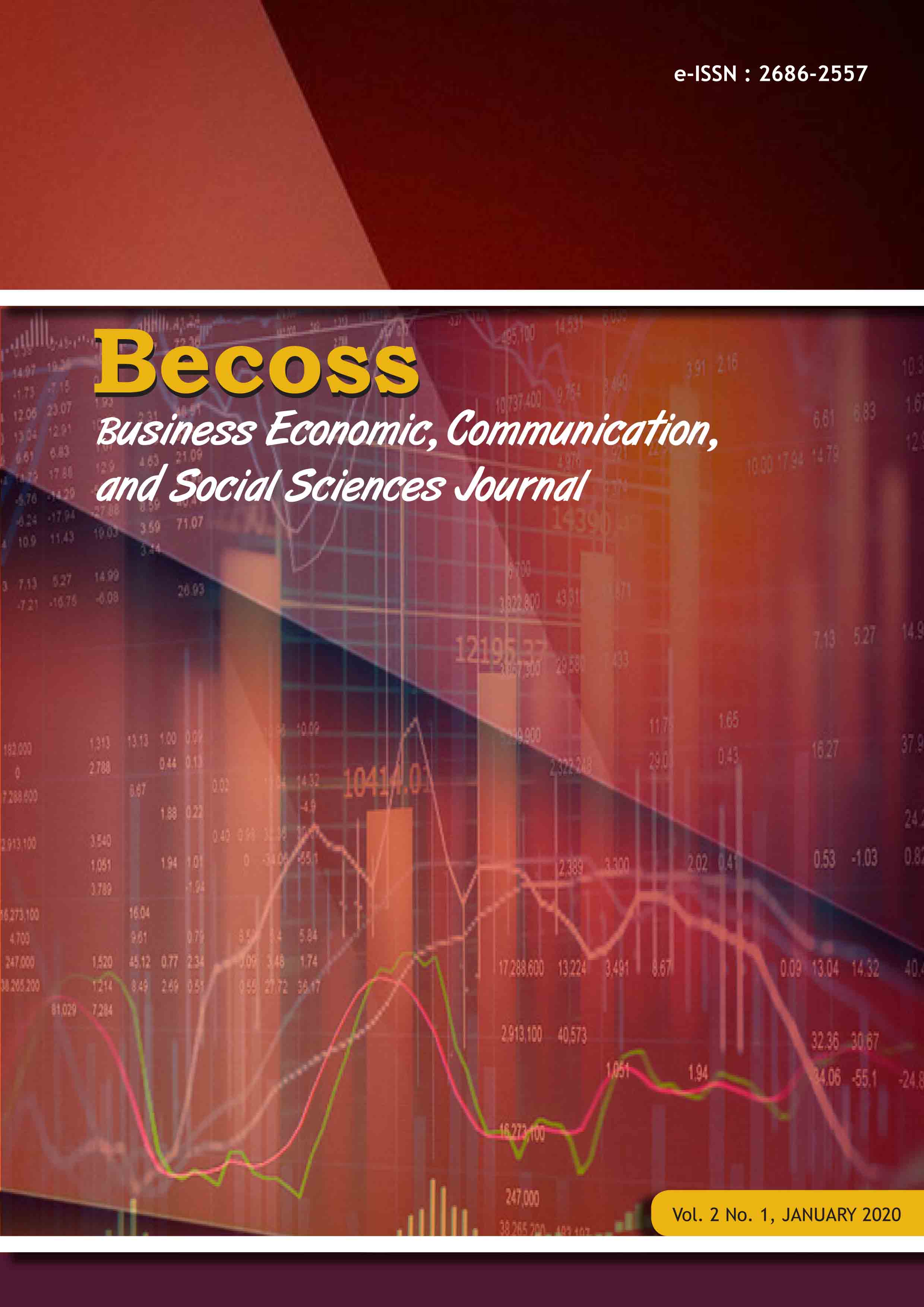Pengaruh Integrasi E-Book Interaktif pada Kegiatan Belajar Mengajar Sains
DOI:
https://doi.org/10.21512/becossjournal.v2i1.6063Keywords:
Interactive e-book, learning outcome, student perceptionAbstract
This study aims to see the effectiveness of the use of interactive e-book on student performance. Other than that, this study also discusses the integrating of interactive e-book into science learning activity, so that it can provide learning evaluation as material for e-book development in future studies. This study conducted in quasi-experimental pre-test post-test control group design. 88 students that are involved in this study were selected randomly of two classes from eight classes, and grouped into experiment and control class to see the effectiveness of using interactive e-book in science learning activities. Independent t-test was used to find out the effectiveness of the interactive e-books, and questionnaire was used to see student perceptions of interactive e-book that have been used in the science learning activity. From the Wilcoxon test, found that probability value (p)obtained was 0.000 (p<0.05). This result showed that each class showed significant difference in learning outcomes, where the experimental class get better than the control class. This finding also supported by the results of the questionnaire that students in experimental class has better learning experiences than students in control class.References
Ciampa, K.(2014).Mobile books: Effect of engagement on students motivation and cognitive strategy use. Dissertation. Faculty of Education, Brock University.Canada.
Davis, B. Summers, M. (2014). Applying Dales’s cone of experience to increase learning retention: A study of student learning in foundational leadership course, Qscience. http://dx.doi.org/10.5339qproc.2015.elc2014.6
Ekayani, P. (2017). Pentingnya penggunaan media pembelajaran untuk meningkatkan prestasi belajar siswa. Reseachgate. https://www.researchgate.net/publication/315105651
Hake, R. (1998). Analyzing Change-Gain Scores. USA; Dept of physics, Indiana University.
Harto, D. B. (2009). Pertimbangan Estetika Dalam Perancangan Multimedia Pembelajaran Interaktif (MPI). Makalah dipresentasikan dalam Seminar Internasional tentang teknologi informasi dan Komputer (TIK). 13-14 Februari 2009 Yogyakarta.
Munir. (2012). MULTIMEDIA, Konsep dan Aplikasi dalam pendidikan. Bandung:Alfabeta.
Mcdonald, J. B. (2009). Teaching and learning with technology. USA:Pearson Education.
Nielsen. (2016). Gen Z: Konsumen Potensial Masa Depan. Online https://www.nielsen.com/id/en/press-releases/2016/GEN-Z-KONSUMEN-POTENSIAl-MASA-DEPAN/ [1 agustus 2019]
Rustaman, N. Y. (2007). Kontribusi wacana multimedia terhadap pemahaman dan retensi siswa. Jurnal pendidika IPA : METAMORFOSA vol. 2 No 1. 29-38.
Setianingsih, Ardani, A. W., Khayati, F. N.(2018). Dampak penggunaan gadget pada anak usia prasekolah dapat meningkatkan resiko gangguan pemusatan perhatian dan hiperaktivitas. GASTER. Vol XVI. 191-205
Downloads
Published
How to Cite
Issue
Section
License
Authors who publish with this journal agree to the following terms:
- Authors retain copyright and grant the journal right of first publication with the work simultaneously licensed under a Creative Commons Attribution License - Share Alike that allows others to share the work with an acknowledgment of the work's authorship and initial publication in this journal.
- Authors are able to enter into separate, additional contractual arrangements for the non-exclusive distribution of the journal's published version of the work (e.g., post it to an institutional repository or publish it in a book), with an acknowledgment of its initial publication in this journal.
- Authors are permitted and encouraged to post their work online (e.g., in institutional repositories or on their website) prior to and during the submission process, as it can lead to productive exchanges, as well as earlier and greater citation of published work.
USER RIGHTS
All articles published Open Access will be immediately and permanently free for everyone to read and download. We are continuously working with our author communities to select the best choice of license options, currently being defined for this journal as follows: Creative Commons Attribution-Share Alike (CC BY-SA)






